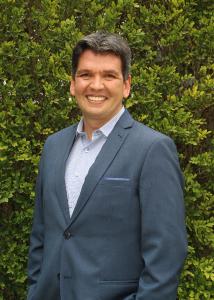Event reports
The event began with the words of Eduardo Calderón de la Barca, Director of Governance Peru, who highlighted the importance of the proliferation of urban parks and conservation areas to generate resilience and adaptation to climate change in Peru and Latin America.
Dr. Walther Salas, Advisor of the Arequipa Regional Government, spoke about the dilemma of the water crisis that may hit the Arequipa region, stressing that there are solutions to this dilemma, within which we can mention the expansion of urban green areas. Likewise, he argued that climate change, as a challenge, is an issue that will facilitate planning by the year 2040. This with the aim of making the future of Arequipa "better livable."
In order to close the welcome block, Ms. Rosa Morales of MINAM was presented, who stated that the interest in Climate Change has become more relevant as the years have passed, for which the Paris Agreement of COP21 is a historical fact in the ratification of measures in this regard. Finally, she underlined the interest of MINAM in integrating the various strategies for Climate Change that are taking place at the national level, for which they already have an ongoing working plan.
From the Costa Rican Technological Institute, Architect Tomás Martinez gave a talk about the importance of urban parks for the achievement of objective 11 of the ODS (Cities and Sustainable Communities), which mentions: "Provision of 45% of the total Urban land for public spaces, including roads (30%) and parks and free spaces (15%) and “universal access to green areas and safe, inclusive and accessible public spaces”, among other statements. To this end, the Regional Urban Proposal - GAM / Costa Rica - is being created in Costa Rica, which uses a systemic approach to a regional ecological strategy that integrates with the urban centrality to achieve sustainable, competitive and tourist regions.
This proposal is based on the control of the urban expansion, the rehabilitation of the city and the creation of green frameworks; which must initiate a virtuous spiral with the desire for interaction with nature. This should continue with the opening of green areas as a living space where inter-institutional alliances can be achieved, as well as tourist and educational circuits; with what it is expected to empower the public space to be a local interest. Architect Martinez stressed that urban parks should respect their natural condition, be accessible to citizens and be a meeting point for social and cultural development, as well as the environmental benefits generated by green areas.
In turn, Anna Zuchetti, Advisor of the Ministry of the Environment of Peru (MINAM), presented the Lima Callao Plan 2035, where she emphasized the importance of recognizing the diversity in each city and seeing the urban plans from its systemic echo approach. Under it, more plans, projects and evaluations can be made to design the green infrastructure in the place indicated with the necessary conditions, so that "every citizen has a small park at a maximum of 300 mts from their home." She stressed the importance of creating a network of ecological infrastructure, combining public spaces, ecological structure and spaces with potential public use in order to be efficiently managed and the street can be "valued as a connector and articulator of a network system "and to achieve" accessible, safe, inclusive and environmentally sensitive spaces ".
As a local effort, 2 projects of urban parks were presented, with different themes, but with the same objective: to value the public space as part of a sustainable city and to claim the ecological characteristics of the area. The Cultural Manager Patrick O'Brien presented the Ashlar Quarry theme park project which, using a natural setting placed in Ashlar, a volcanic rock widely used in the architecture of Arequipa called "White City", seeks to create a Tourist, cultural and artistic complex that intensifies tourism and citizen integration. The second project, the Regional Ecological Park “Las Rocas de Chilina” or by its acronym PERRCH, was presented by the President of the NGO Arequipa Sustainable City Zoila Linares, who emphasized the need to take action against the present deficit of 85% of green areas in Arequipa.
He also mentioned the importance of reforesting the city with native flora and not as it is being done with exotic flora of high water consumption. In this sense, this project seeks to revalue the endemic flora, optimize the use of water, take advantage of rainy seasons, and motivate the population to behave as citizens with a desert climate, who value and optimize the use of its natural resources to allow the comprehensive development of Future generations. It also represents an emblematic model of urban park in which research, recreation and tourism interact.
Then the Arequipa and its ecosystems discussion panel continued with the participation of the speakers Tomás Martinez and Anna Zuchetti together with Karina Espinoza, Technical Administrator for the entire region of Arequipa of the National Forest and Wildlife Service (SERFOR), who remarked that, although both projects are of public interest, PERRCH should be declared a priority because it proposes not to lose the character and spirit of the desert ecosystem as a means of conserving the native biodiversity of flora and fauna; Arturo Cornejo, Southern Territorial Coordinator of the National Service of Natural Areas Protected by the State (SERNANP), who commented on the local experience he has been carrying out in agreement with the Regional and Local Government for the conservation of the Queñua forests and wetland areas together with the Peasant communities in exchange for infrastructure, equipment and training to maintain and improve the quality of nature reserves; and Luis Francisco Ampuero, General Director of Urban Development of the Metropolitan Institute of Planning (IMPLA), which is part of the Provincial Municipality of Arequipa, who stressed that the city of Arequipa is the head of the Atacama Desert and considered an oasis. In addition, he mentioned that the Metropolitan Development Plan approved in February of this year has a policy of incorporating green areas and zonal parks, which considers the areas of both projects as protected areas.
Finally, the closing speech was given by Andrea Linares, Co-Founder of NGO Arequipa Sustainable City.
Note: Attached in pdf "Relatoria" of the event. Only in Spanish.















